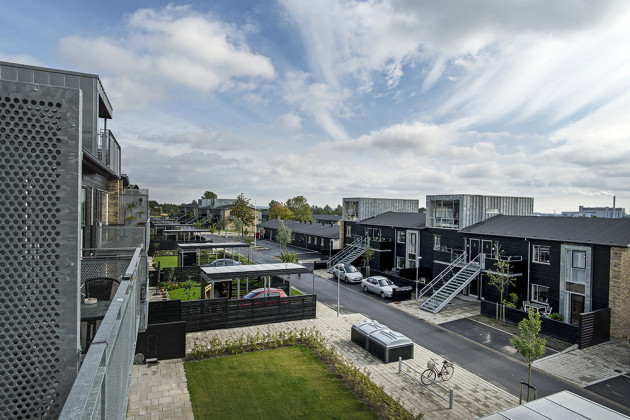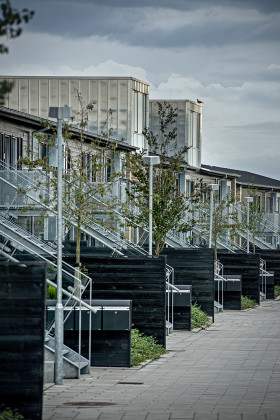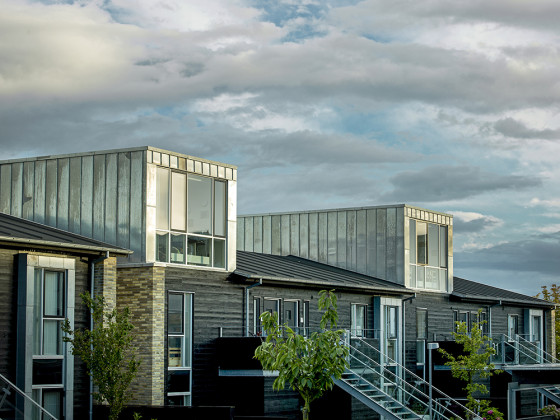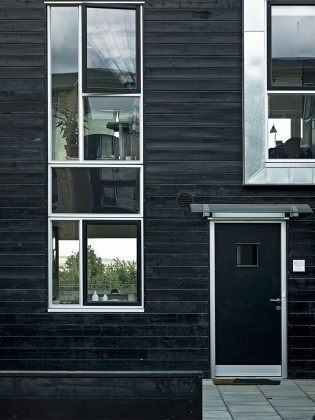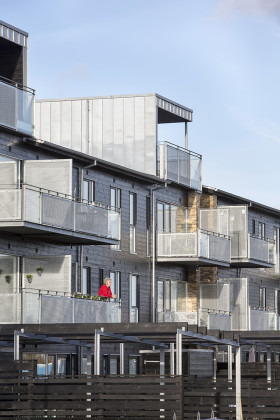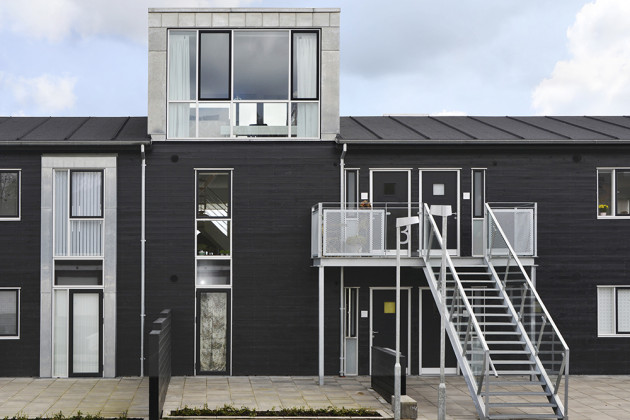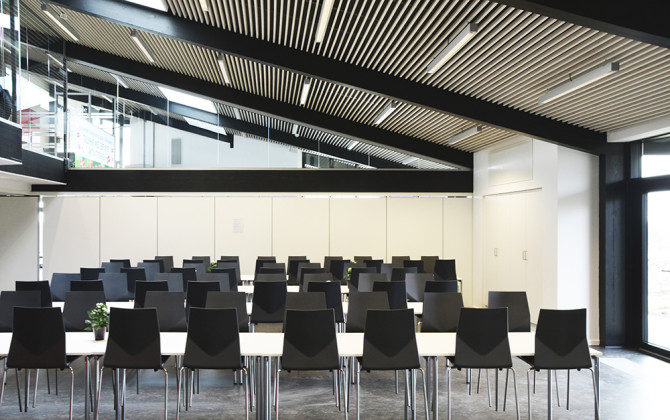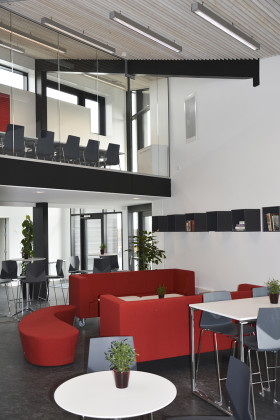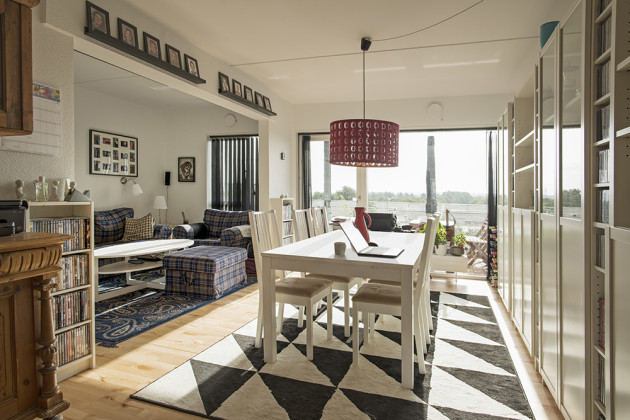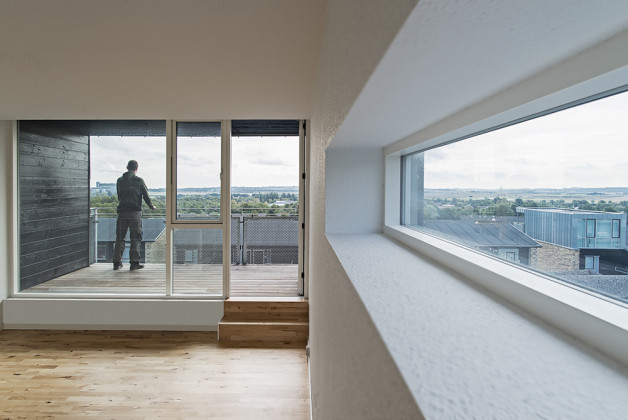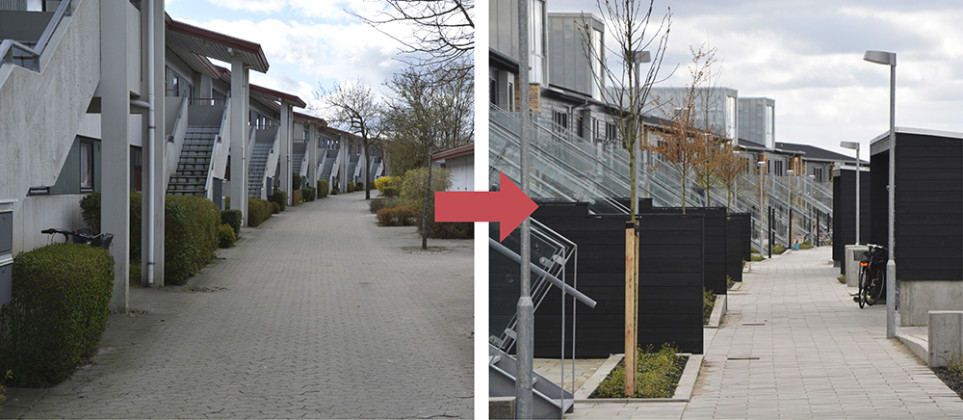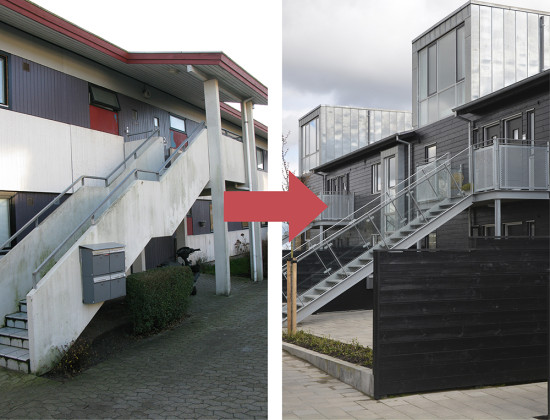Multifaceted Transformation
The waning settlement built in 1970s has been converted into an environment-friendly living space through extensive strategies loyal to its present qualities
The conversion and renovation of 370 homes transforms the monotonous, 1977 prefabricated "crane track" estate of the Himmerland Housing Association into a welcoming and sustainable garden city complex. The new timber-clad façades feature large windows, French balconies and bay windows, filling the homes with light and a pleasant outlook.
Some homes are combined into larger flats, while others are being expanded upwards as modern, two-story roof-top flats with open spaces and full-height glazing. The 1970s estate is thus transformed into a contemporary, family-friendly cluster of townhouses.
Ground floor apartments are fully accessible life-time homes, featuring small private gardens and a carport. As part of the overall sustainability strategy, the new cladding and roof-top flats are designed as prefabricated units which are simply hoisted in place.
A shared community activity building, which meets the strict requirements of the Danish low-energy class 2020, is located centrally as a natural gathering point for all of Himmerland Housing Association's residents in the area.
All-round Transformation
The Departments 19 and 22 of the housing estate were typical examples of public housing dating from the 1970s. On arrival at the complex, the outdoor areas were deserted. There were desolate and anonymous central car parks and monotonous vegetation in the shape of open lawns and uniform shrubs and bushes.
The complex turned its back on the local area and each individual residential unit turned in on itself. The recreational areas were sporadic, fragmented and their identity unclear. The areas in front of the residential units were public right up to the facades, and no-one took ownership of these areas.
The existing concrete façades were monotonous, sad and dilapidated. Small windows and ponderous balconies resulted in dark residential units and an unwelcoming appearance. Flats were draughty, and the structure showed severe heat loss in critical areas.
The renovation project has transformed this anonymous residential area into a vibrant, socially sustainably district, in which landscape elements make it easy to find your way and open front gardens create individual identity for this location. The open front gardens encourage residents to take ownership of the spaces between the houses and add a sense of security in the public spaces. Similarly, the former closed end-walls have been revitalized, with windows and balconies overlooking more of the area.
With the brick gables, black-painted prefabricated timber cladding with glass sections from floor to ceiling, characteristic "roof boxes" and new light stairways in steel and glass, the building complex has left the 1970s behind, setting contemporary new standards for the renovation of public housing in northern Jutland.
All of the flats have been fully renovated, accessibility has been improved and, via con-versions and extensions, new types of housing have been established that were not previously among the range of flats offered in these two sections of the housing association. For example, 91 of the refurbished flats are now two-story units and many have large, south-facing balconies. There is still a solid base of well-renovated two- and three-room flats, while more interesting new home typologies are added to bring a greater diversity of residents into the area.
Sustainability Strategy
The overall sustainability strategy is based on a holistic approach, in which the environmental, financial and social aspects are all incorporated into the concept. We seek to achieve cohesive interplay between the architectonic qualities in the renovation, the general financial limitations and a variety of integral sustainability measures.
The Himmerland Housing Association wished the renovation to give emphasis to social sustainability, environmental sustainability, accessibility, openness, variety, diversity and identity. The project is therefore based on a clear, forward-looking sustainability strategy, which addresses energy optimisation, rational construction techniques, prefabrication, climate-change resilience, social living qualities and the local community. Cohesion of these factors has been achieved without compromising the aim to create a distinctive new neighbourhood, with low operating and maintenance costs, and all energy-savings in the renovated homes achieved solely by means of passive measures.
The landscaping is part of the sustainability and accessibility strategy, replacing most stairs with ramps and introducing the use of sustainable urban drainage systems (SUDS), including surface water infiltration and permeable surfaces in swales to the south of the blocks. South of the central activity building, a small "wetland" is established, with rain beds to handle increasing precipitation. The rain beds collect rainwater so that it does not have to be drained off.
 23.05.2016
23.05.2016



